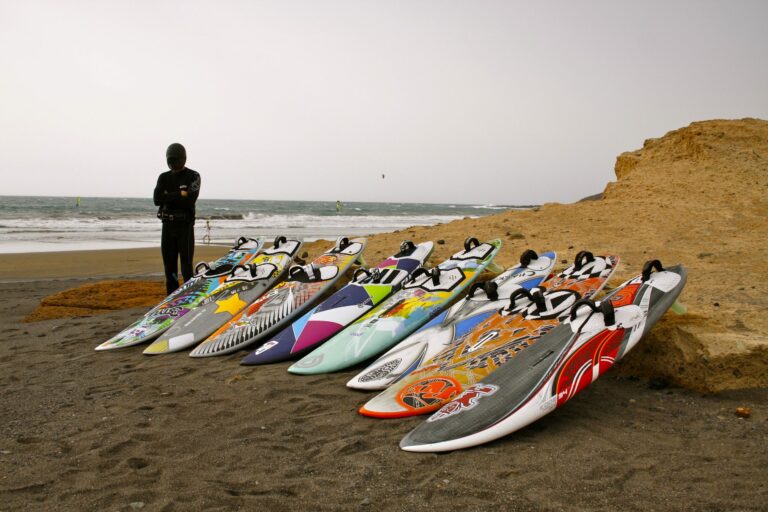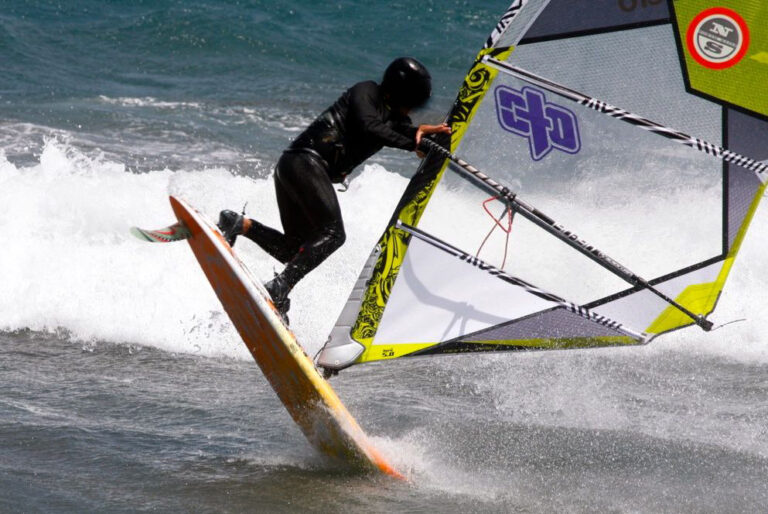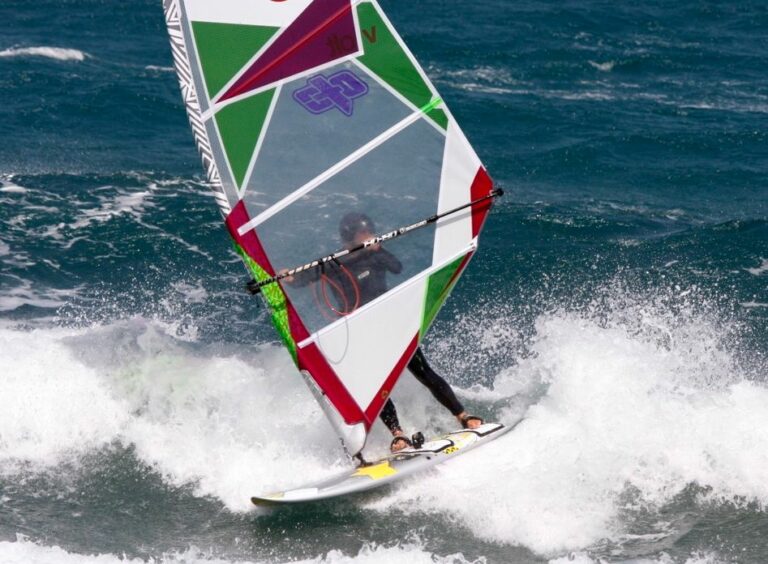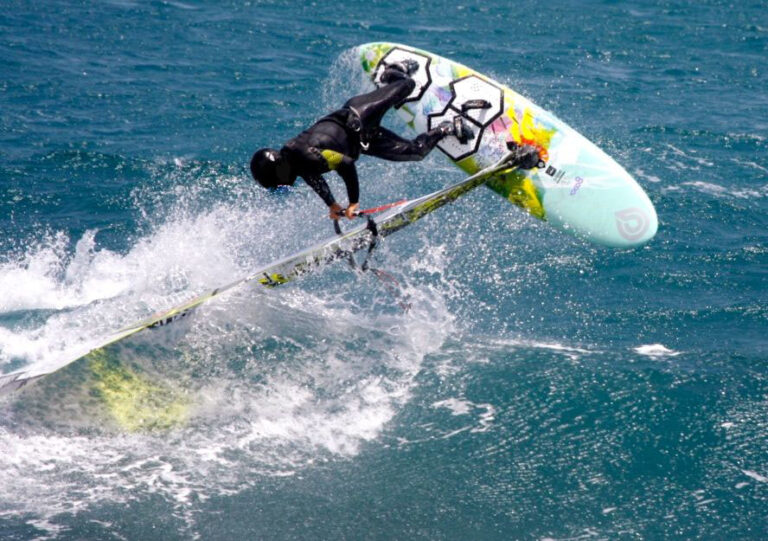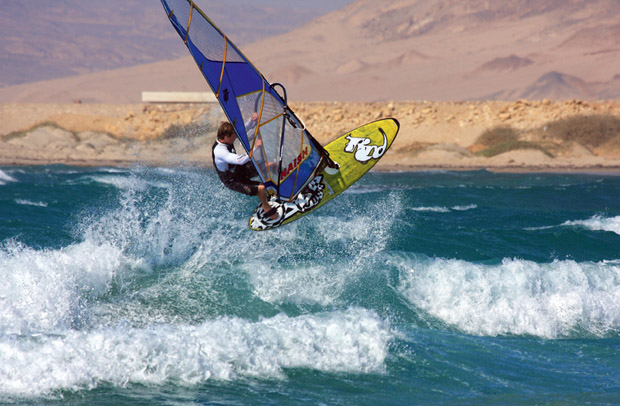
The freestyle-wave (FSW) is probably the most versatile shortboard you can buy. Other than light wind course racing there really isn’t much it can’t turn its hand to. They are excellent for ‘burn-&-turn’ and jumping, and useful too for moderate wind waveriding and stronger wind freestyle.
They come in a whole range of sizes from about 75L/56cm right up to 115L/66cm, for heavyweight sailors (although most ranges stop at around 105L). The two biggest selling sizes though tend to be the 85L/58cm and 95L/60cm boards, because these are the most ideal for the average weight windsurfer (70-87kg). Usually we test the 85L/58cm boards, for the simple reason that the size has tended to suit our testers. This season however, we have chosen to check out the bigger size for a change, partly to accommodate Paul, our new test team member who weighs in at about 85kg.
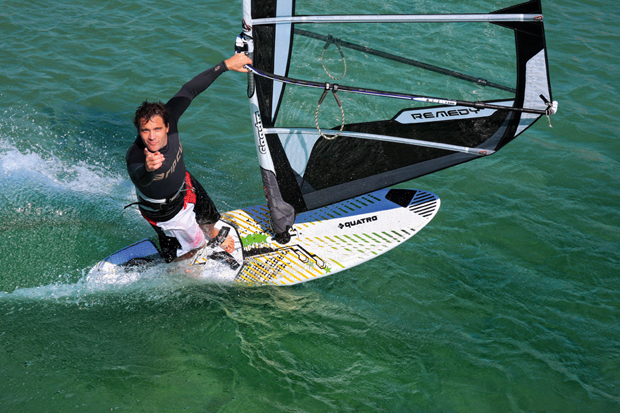
FSW boards are very weight critical; being on too big a board will significantly reduce your enjoyment. The right size for you will be determined by a combination of your bodyweight and what you want to do with it. Those looking to get maximum manoeuvrability and agility for a lively feel with good jumping, turning and waveriding should go for a board that has approximately 10L more volume than their naked weight in kg. Those looking for more float, ease and performance in slightly lower winds should look for about 20L excess volume. This provides a degree of non or marginal planing possibilities, more stability and slide for freestyle use, or simply a little more user-friendliness for those progressing down to a board of this size for the first time.
IMPORTANT: SCALING UP AND DOWN
Although in any given month we only test one size of board, these days there is nearly always a very distinct and similar feel and performance within any given range. For example, one RRD FSW is likely to feel and sail in a very similar style to another of a different size. It is true that there are ‘sweeter’ sizes in any range but really important things like style of performance and relative sizings tend to be very similar indeed.
So, although this test deals exclusively with boards of around the 95L mark it is fairly safe to infer conclusions about boards of up to 10 or 15L either side of this size. For the full story on smaller FSWs get a copy of our Jan/Feb issue, which has a detailed test on this size.
So let’s now look at what sort of performance parameters you can expect from your FSW.
Bottom end: Whether you go for the +10 or +20L option, you can expect your FSW to start working properly from the top of a steady Force 4. Generally speaking, this will mean a maximum sail size of 6.0m with an 85L board, and a maximum of 6.5m on a 95L, although the more heavily rockered FSWs don’t really work well at these maximum sail sizes and prefer a bit smaller.
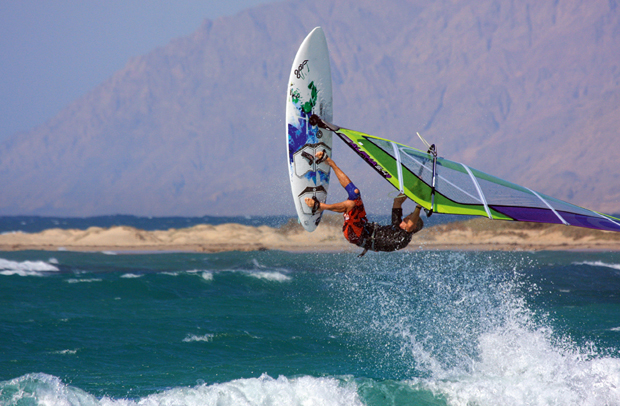
Top end: For many progressing and weekend sailors the FSW will be the smallest board they own, so it will need to offer a decent upper wind range. Which they do – all can cope with 25 knots of wind, and in reasonably sheltered water with the right sail and fin they can manage more again. However, if strong wind performance is a real priority it would be wise to opt for one of the more rockered boards, although it is important to understand that this will have repercussions at the lighter wind end of the scale.
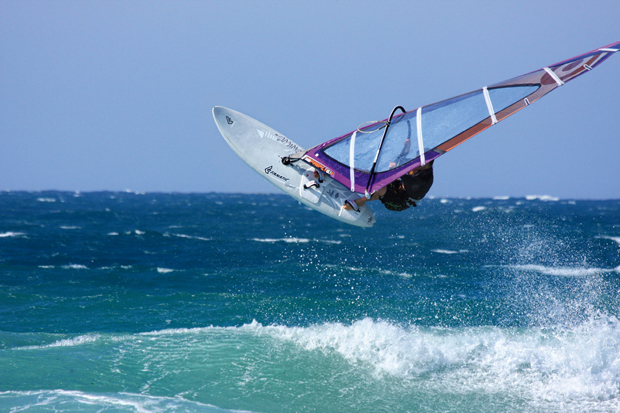
One Slot Board: Many buyers will have a FSW in their quiver for one very specific wind range. Being small but quick to plane and very versatile, these boards can offer exciting and varied manoeuvre-oriented sailing earlier than any rival board, and certainly considerably earlier than a waveboard – particularly so for jumping which they are very strong at in relatively moderate winds. There is therefore a small but significant wind range (when the breeze is solid but not enough for a waveboard) in which these boards are pretty much unchallenged for most use in waves, or even just for blasting and gybing. Although some expert sailors choose to use their dedicated freestyle boards in this wind strength or wait for a decent riding wave for some ‘slog and ride’ sailing on a big waveboard, we feel that they can miss out on some excellent sessions as a result. Despite the team only ever using our own freestyle-wave boards with 5.7 or occasionally 5.3m sails they quite often get as many sessions in a season as our waveboards, and often provides the best ones!
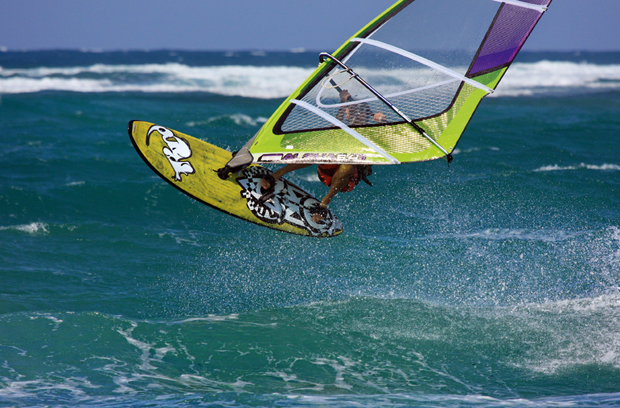
Whatever your reasons for buying may be, if you do end up choosing a board from this test you have a few very important decisions to make. You could just go with the flow and choose the board that emerged as our (or your local beach) favourites, but you really should ensure that you are getting the right type and size of board to suit the use you’ll put it to. FSW boards vary considerably in design, and despite all in this test quoting around 95L, the large variety in widths, tail widths and rockerlines of the boards mean that they suit different sail sizes, plane with considerably more or less power (and therefore wind) and react differently to different water states. Some are very effective in flat water and moderate winds, others very effective in waves and medium winds. Knowing what you want and choosing the right type of board is more than half the battle.
THE BIG CHOICES
As stated in the main text, the two main buying considerations should be size and type of board.
Size: This basically comes down to width and tail width. Volume is useful as a general classification and is easily understood for relating to body weight and grouping relevant boards. However, if you want to get specific about board size, the planing area (and therefore the widths) are much more important for establishing intended use in terms of lift, relevant wind strengths (early planing and overpowering) and appropriate sail sizes. This is why we tend to group our tests around width rather than volume. Volume is really only strictly relevant to the flotation of a board when not planing and although this plays a part it is mostly relevant to intermediate, freestyle or ‘float-&-ride’ sailors.
For example although nominally only 97L the Tabou 3S has a tail width of 40.8cm (comparing to an average on test of about 37.5cm). This is responsible for making it feel much bigger, supporting heavier sailors, planing very early for a board of its rocker profile and becoming bouncy much earlier than its rivals.
The range from this test is 59.3-62cm for max width and 36-40.8cm for tail width. This max width difference isn’t that great (2.7cm) but is still enough to make one board a full size up or down and therefore suiting a different weight of sailor or type of use. The tail width range is greater (4.8cm) potentially giving an even greater differential of effective size in boards.
We always publish max and tail widths with our tests and it is really impossible to accurately assess the exact suitable size of board you need without digesting and understanding these measurements. Volume alone can be both inaccurate and deceiving and we all too regularly see wrong choices made on the back of it.
Board Type
The ‘type’ of board is determined by the sum of its design features. However, there is one feature that is just way more important than the rest and you ignore it at your peril. The rockerline will determine whether your board planes really early and blasts fast and comfortably, eating up the chop or whether it’s designed to really exploit the waves and turn very like a waveboard. Unfortunately these two virtues aren’t fully compatible and any board you buy will have a rockerline that favours one or the other (or lies between the two).
Rockerline differences are subtle and you could easily look at two boards in the shop and have no idea of the extent of the differences. Without a straight edge and tape measure you would be hard pushed to see it. Two poles from this test would be the Exocet Cross and Mistral Style. The Exocet has a small amount of tail rocker (3mm) and a very long planing flat (158 2cm point – see measurements). By contrast the Style has both a relatively high tail rocker (7mm) and a very short planing flat for a FSW (137 2cm point). So – what difference does this make on the water? Well, the Exocet is way earlier to plane. With the same sized sail (6.0m) on both it would plane comfortably in three or four knots less wind, but it would also happily take a larger sail than the Style to get going still earlier. However, in waves the Style feels very noticeably looser and more agile. Due mainly to its rocker profile the Exocet is way easier to get upwind (in moderate winds), is more comfortable and easier to blast at speed and handles chop much better, staying flatter. Whereas the Style feels much more willing to turn and considerably less fast and frantic when the wind is very strong.
Rockerlines may seem complex to understand, but hopefully a perusal of the figures (our own measurements) in the accompanying table will make the differences clear. As discussed in depth in the last issue, the tail rocker and ‘2cm point’ figures will tell you a great deal: High 2cm point value (e.g. 158) = long planing flat. Low value (e.g. 137) = short planing flat.
In brief you should look for low tail rocker and long planing flats (high 2cm point) if you want your FSW to be quick and easy to get going, easy to get upwind and stay flat and composed in chop. You should look for higher tail rocker and shorter planing flats if you want your board to feel loose and manoeuvrable, better for waveriding and able to slow down the action a little in stronger winds.
SAIL SIZES
95L FSW boards will usually work well with sails up to about 6.5m. However, as detailed elsewhere this will vary between boards depending on their rocker profile and widths (max and tail). A really wide board with a flat rocker will probably take considerably more (even up to 7.5m) while a narrower board with lots of rocker will take considerably less. Generally the boards we have detailed in the ‘placement and favourites’ section as having a ‘blasting or flatter water bias’ are much more likely to benefit from big sails as this can play to their strengths of early planing and comfortable blasting. Those detailed in the ‘wave bias’ section are less likely to benefit much from sails above 6.0m partly because they won’t plane significantly earlier due to their rocker profile and partly because the type of use they excel in is severely hampered by big sails.
Generally speaking we would advise against going to the maximum in sail size unless you are very keen to sacrifice comfort, feel and manoeuvrability for early planing and blasting. We found something around the 6.0-6.3 size to be a nicely comfortable biggest size for the majority of boards on test.
At the other end of the scale it is pretty open-ended what smallest sizes the boards will take. We’ve used them many times with sails as small as 4.2m, but if you’re going out in really strong winds you’re generally best off trying to find fairly flat water. Faster rockered FSWs definitely get a bit fast and hectic if used in very strong winds, but boards with more rocker will get a bit bouncy and pitchy.
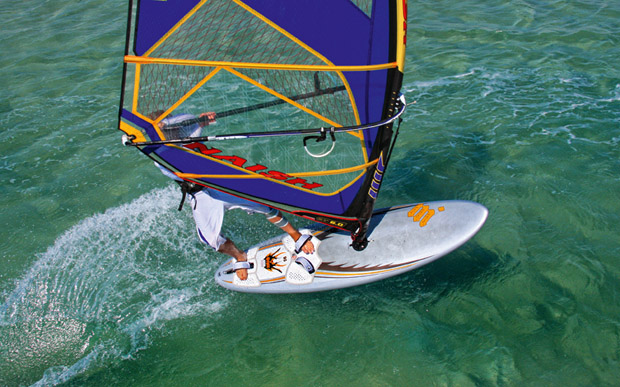
FINS
If you will use your FSW as a ‘one slot board’ for that wind band in between freeriding and waveboards, you will probably only need one fin but you would want it to be reasonably big. Possibly 27-29cm for a 95L board. Most of the fins sold with the boards would be suitable but one or two may work better with something a little bigger.
If you intend to use your FSW in a range of winds you will definitely gain advantage from having a couple of fins. For a 95L perhaps a 27-29 for moderate winds and a 23-25 for medium to stronger winds. For sure you will get by without two but performance at the extremes of the wind range will suffer quite a lot, with control problems in stronger wind and/or lack of balance and upwind performance in marginal planing winds.
NAMES
Although this category of board is commonly called ‘freestyle-wave’ they are basically just good all-round versatile recreational boards. So don’t be put off by the name thinking that you may not be quite ready to specialise in freestyle or waves! Most people using these boards spend most of their time blasting and gybing, and most of these boards are ideal for that. Few users can really do any advanced freestyle, even though the boards are quite capable of it. Likewise they will only occasionally get used for serious waveriding even though, again, most boards certainly can perform well.
The naming is more about aspiration and image than accurate description – and actually ‘burn, turn-&-jump’ would be a much more appropriate, if less marketable, alternative!
PLACEMENT & FAVOURITES
I know it seems like a cop-out just saying that all the boards are good these days, but certainly from this test there was wall to wall quality of design. For sure there were some minor issues concerning straps or fins or ergonomic deck shaping, and one or two boards were quite unusual and will only appeal to a minority of sailors. Nevertheless, every board here will be an excellent purchase for at least one type of freestyle-wave performance, and even the ones that aren’t at the head of the popularity ratings still pleased most of our testers and guesters and worked well.
All-Rounders
The two boards to consistently get the most praise were two old favourites from past freestyle-wave tests, the Fanatic Freewave and RRD Freestyle Wave. They are very similar in being relatively centrally placed in respect to size (width and tail width), rocker and application. Although the Fanatic has quite a lot of rocker it seems unusually fast and lively for its rockerline, and conversely although the RRD is relatively flat it seems unusually manoeuvrable and wave friendly for its rocker. Both are basically very versatile FSW boards that plane pretty early and will take 6.5m sails if required for fun blasting in very moderate winds. Likewise both are fun to jump and waveride, and both will turn their hand usefully to freestyle if required, particularly if given smaller fins. Of the two the Fanatic feels more lively and exciting and a little more agile, while the RRD is more comfortable underfoot, easier to sail and outstanding for jumping.
Hard on the heels of these two for all-rounder popularity came the JP Freestyle Wave. Not quite as quick to plane and a bit less popular for waveriding but very lively and fast, compact and direct and another terrific jump board.
Blasting / flatter water bias
Of the boards with flatter rockers which excelled in flatter or choppier water for blasting but also gave a good account of themselves in the waves and swell, the AHD Rebound and Mistral Syncro were the most popular. Although they are brilliant blasting boards that will be loved by burn-&-turn sailors both are still versatile, but they are very different to each other. The Mistral is wider, particularly in the tail, allowing it to take a considerably bigger sail and carry considerably bigger sailors than other boards from this test. This width and the low nose does take the edge off its suitability for use in waves but it remains a very versatile, lively and manoeuvrable FSW board with a loose feel. The Rebound feels initially quite gunny and it has speed, immediacy and connection with the water giving a very direct but exciting feel. It is a delight to blast and very responsive in the carve, giving a manoeuvrable feel in the waves despite the slight stiffness occasioned by its rocker. Both would be brilliantly suited to sailors who will be majoring on flatter water sailing but still want wave suitability.
The same could also be said for the Thommen Cross X and Exocet Cross, which are also both great all-rounders with a flatter water bias. The Exocet is similar to the Mistral in its big sail carrying abilities, though it feels a bit faster and a touch stiffer. The Thommen is much more like the Rebound feeling more agile and a bit looser in the waves than the Exocet.
Wave Bias
Of the more wave oriented freestyle-waves there was little to choose between the Quatro Freestyle-Wave and Goya One for popularity. Both of these with their rounded outlines and flattish decks have a distinct waveboard feel, and both feel clearly looser in the waves and are happier in stronger winds for coastal sailing than most of their rivals. Of the two the Goya got slightly higher votes, but the Quatro has a clear advantage when sailing underpowered. They are both fast waveboards that, unlike conventional waveboards, can work well in the waves with sails of 5.5-6.0m and can make a lot of fun out of wave conditions that would go to waste with a smaller or more rockered waveboard. We wouldn’t particularly recommend either for use outside the wave environment, but for making the most of light wind waves or for heavier sailors in waves they are excellent.
The Mistral Style and Tabou 3S were also good fun in waves. The Mistral Style has a more blasting-oriented, control and high wind leaning. It is not dissimilar to the Goya and Quatro, and while not quite as much fun to ride is much more comfortable to blast for burn-&-turn type sailing and more suited to lighter sailors. By contrast the Tabou is less comfortable for sustained blasting, but is very loose. Its forte is that it gets planing very early for so loose a board, and while it is much more bouncy in the waves than any of the other wave-biased boards it will take bigger sails and get going significantly earlier and still feels very manoeuvrable.
If you want to know more about a specific board, check out the more detailed reviews of each one:

